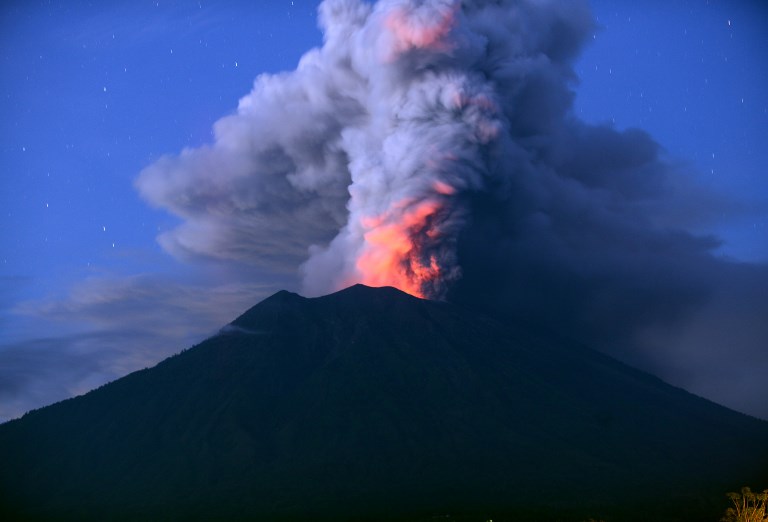The international airport on the resort island of Bali will be closed for a third day, Indonesian officials said Wednesday, as ash from an erupting volcano poses a danger to planes.
“Bali’s Ngurah Rai airport will remain closed until at least Thursday morning,” airport spokesman Arie Ahsanurrohim told AFP.
Mount Agung, which looms over one of the world’s top holiday spots, could produce a larger, thunderous eruption at any moment, officials have warned, forcing the main airport to be shut since Monday.
Massive columns of thick grey smoke and ash that have been belching from the volcano since last week have now begun shooting high into the sky, forcing hundreds of flights to be grounded and stranding around 120,000 tourists.
Ash is dangerous for planes as it makes runways slippery and can be sucked into their engines.
Tens of thousand have already fled their homes around the volcano — which last erupted in 1963, killing around 1,600 people — but as many as 100,000 will likely be forced to leave, disaster agency officials have said.
There is a 10 kilometer exclusion zone around Agung, which is 75 kilometers away from the beachside tourist hub of Kuta.
Some 100 buses will haul stranded visitors to several destinations including Indonesia’s second-biggest city Surabaya — 13 hours’ drive and a ferry ride away — and the capital Jakarta, the airport said, as torrential rain lashed the beach paradise.
Disaster officials have previously raised alert levels to maximum and accelerated the mass evacuation of people living in Agung’s shadow.
Agung rumbled back to life in September, forcing the evacuation of 140,000 people living nearby. Its activity decreased in late October and many returned to their homes.
However, on Saturday the mountain sent smoke up into the air for the second time in a week in what volcanologists call a phreatic eruption — caused by the heating and expansion of groundwater.
So-called cold lava flows have also appeared — similar to mud flows and often a prelude to the blazing orange lava of popular imagination.
Indonesia, the world’s most active volcanic region, lies on the Pacific “Ring of Fire” where tectonic plates collide, causing frequent volcanic and seismic activities.





Reader Interactions